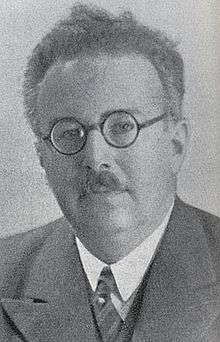George van den Bergh

George van den Bergh (25 April 1890, Oss – 3 October 1966, Oegstgeest) was a Dutch law professor and amateur astronomer.
Van den Bergh was the son of Samuel van den Bergh, one of the founders of Unilever. His brother Sidney James and his nephew Maarten would follow his father in business life, while George pursued an academic career. He was a lawyer in Amsterdam, 1915–1936. From 1925–33 he was a member of the House of Representatives of the Netherlands. He was author of Astronomy for the millions and The universe in space and time, which were translated into English in 1937. Etty Hillesum (An Interrupted Life) mentions that he was arrested and detained by the Nazis in 1941.[1] He survived the war. During the 1950s he studied the longer eclipse cycles, allowing him to predict solar and lunar eclipses over a long time interval.[2] This was published in 1955 as Periodicity and Variation of Solar (and Lunar) Eclipses.[3] In 1958 he developed a compressed form of typesetting called Hoofdletters,[4] published as Hoofdletters, Tweeling- en Meerlingdruk.
The crater Van den Bergh on the Moon is named after him.
References
- ↑ Etty Hillesum, An Interrupted Life, New York: Holt, 1996
- ↑ Staff (September 8, 2003). "A Catalogue of Eclipse Cycles". Retrieved 2007-11-20.
- ↑ van den Bergh, George (1955). Periodicity and variation of solar (and lunar) eclipses. Bibcode:1955pvsl.book.....V.
|access-date=requires|url=(help) - ↑ Kindel, Eric (2001). "Hoofdletters, Tweeling- en Meerlingdruk". Eye Magazine. Retrieved 2007-11-20.
External links
- "Mr.dr. G. van den Bergh". Parlement & Politiek. Retrieved 2007-11-20.
- "Archief George van den Bergh". International Institute of Social History. Retrieved 2007-11-20.